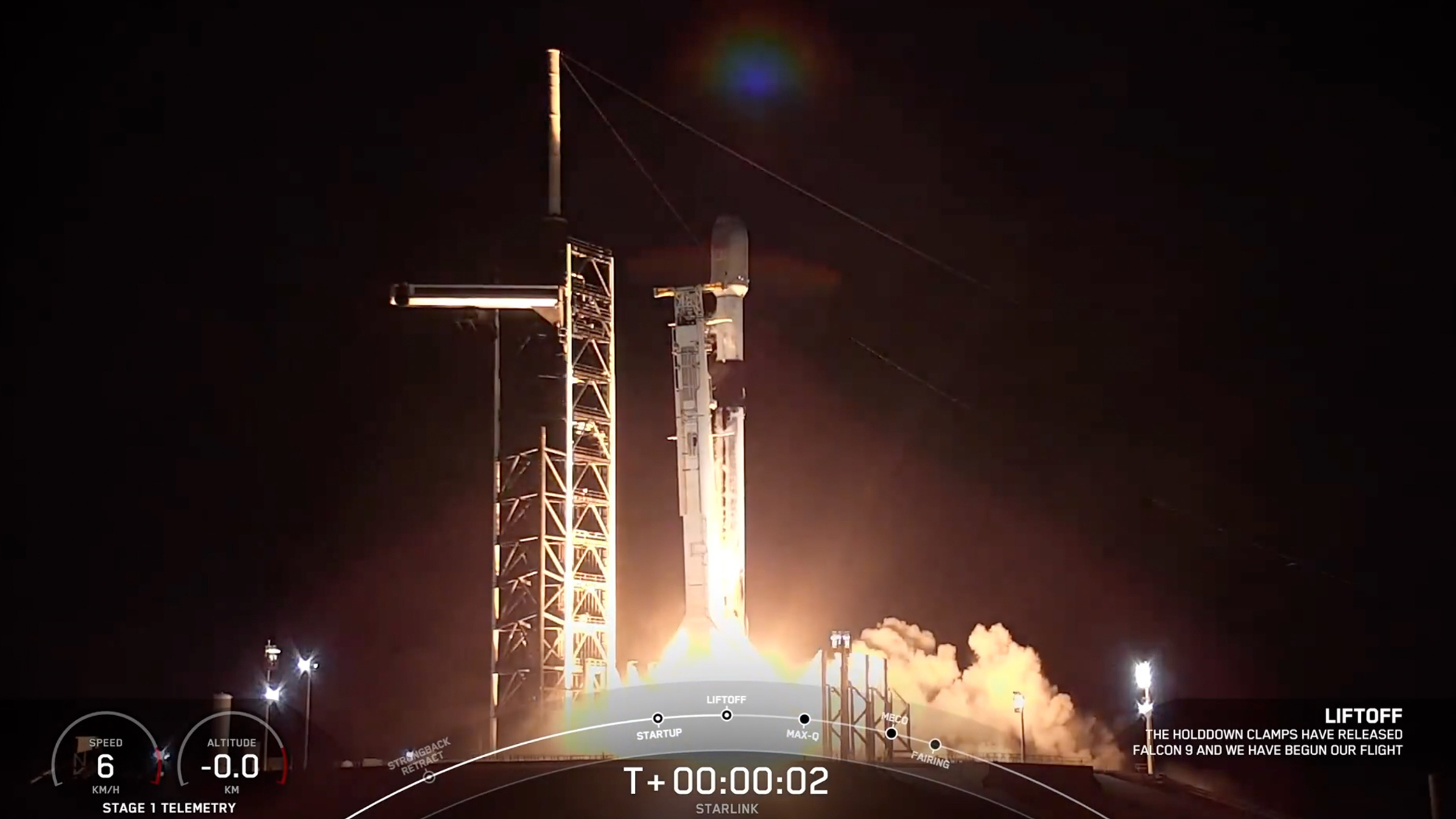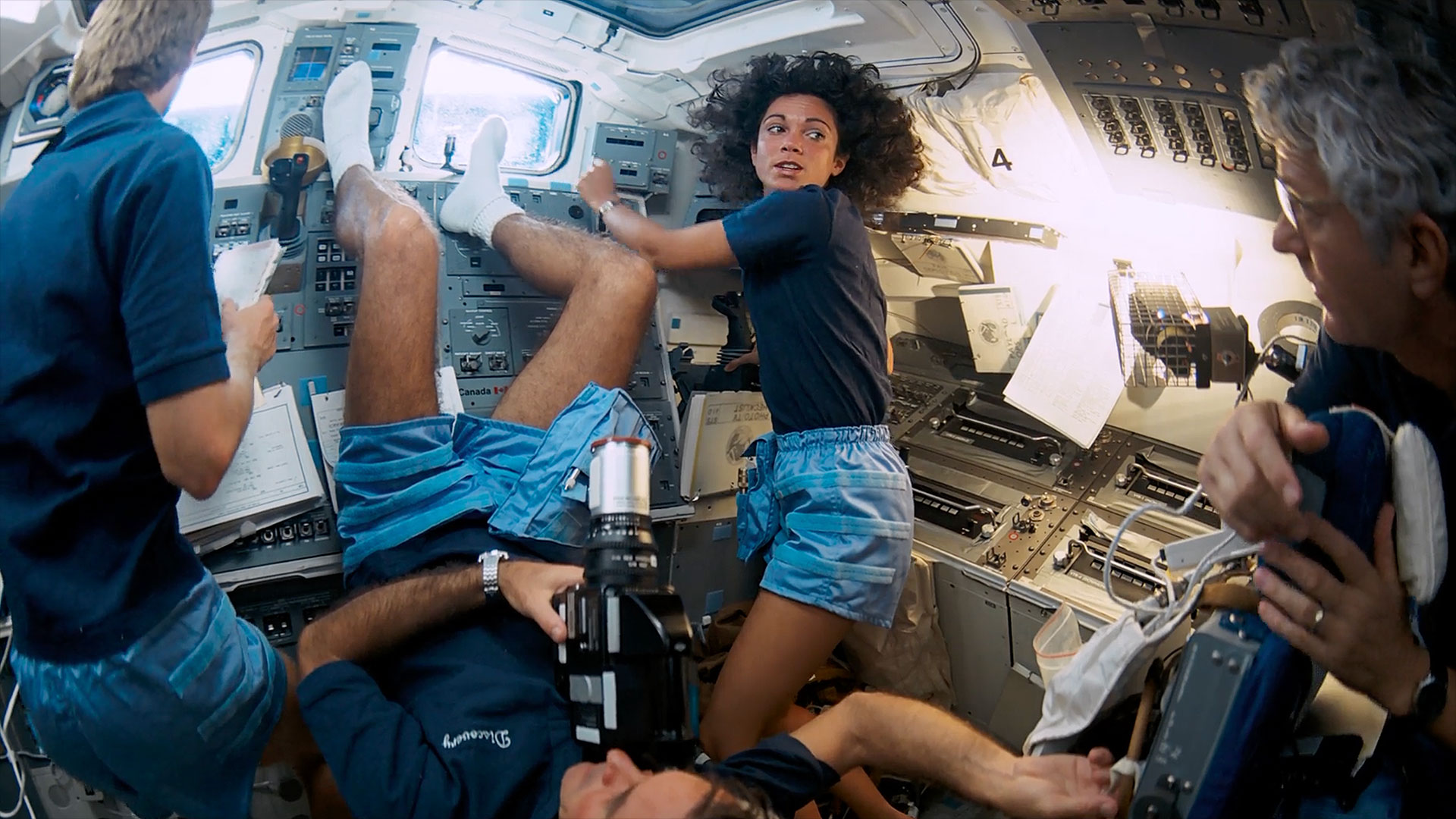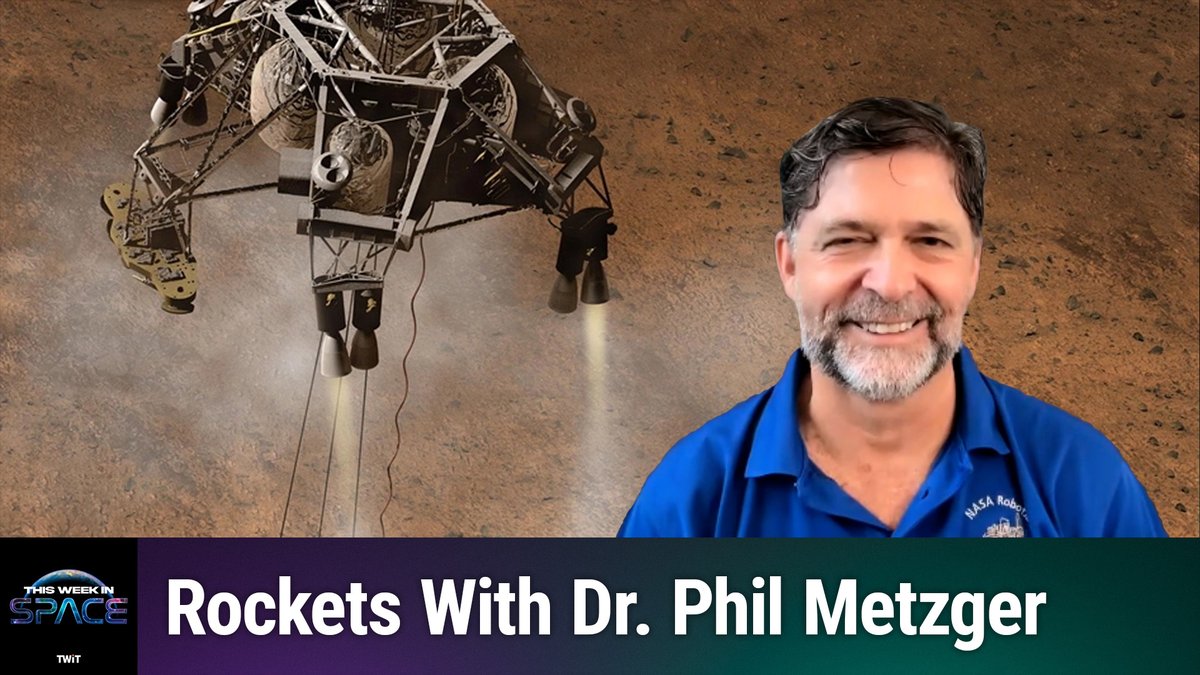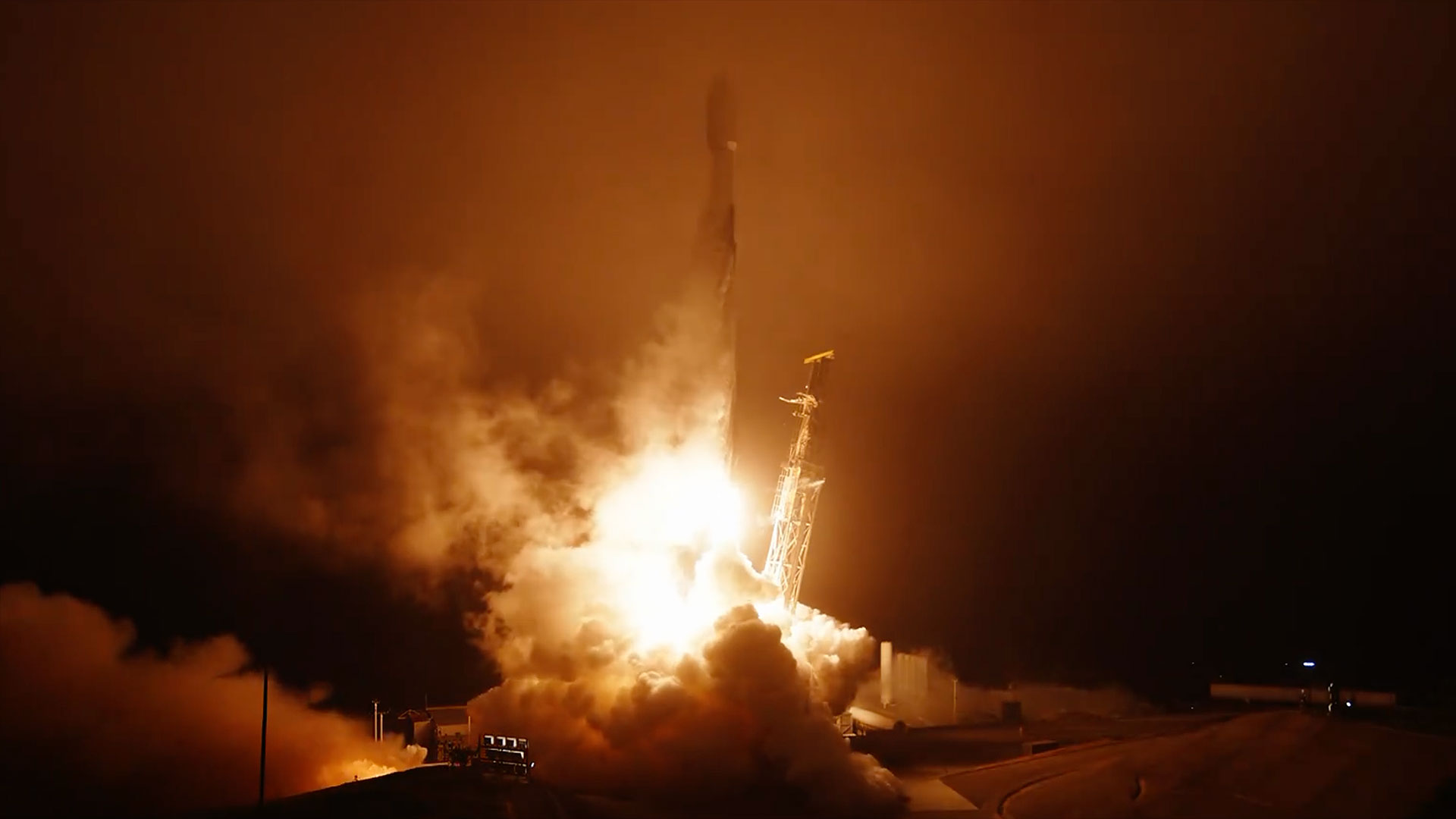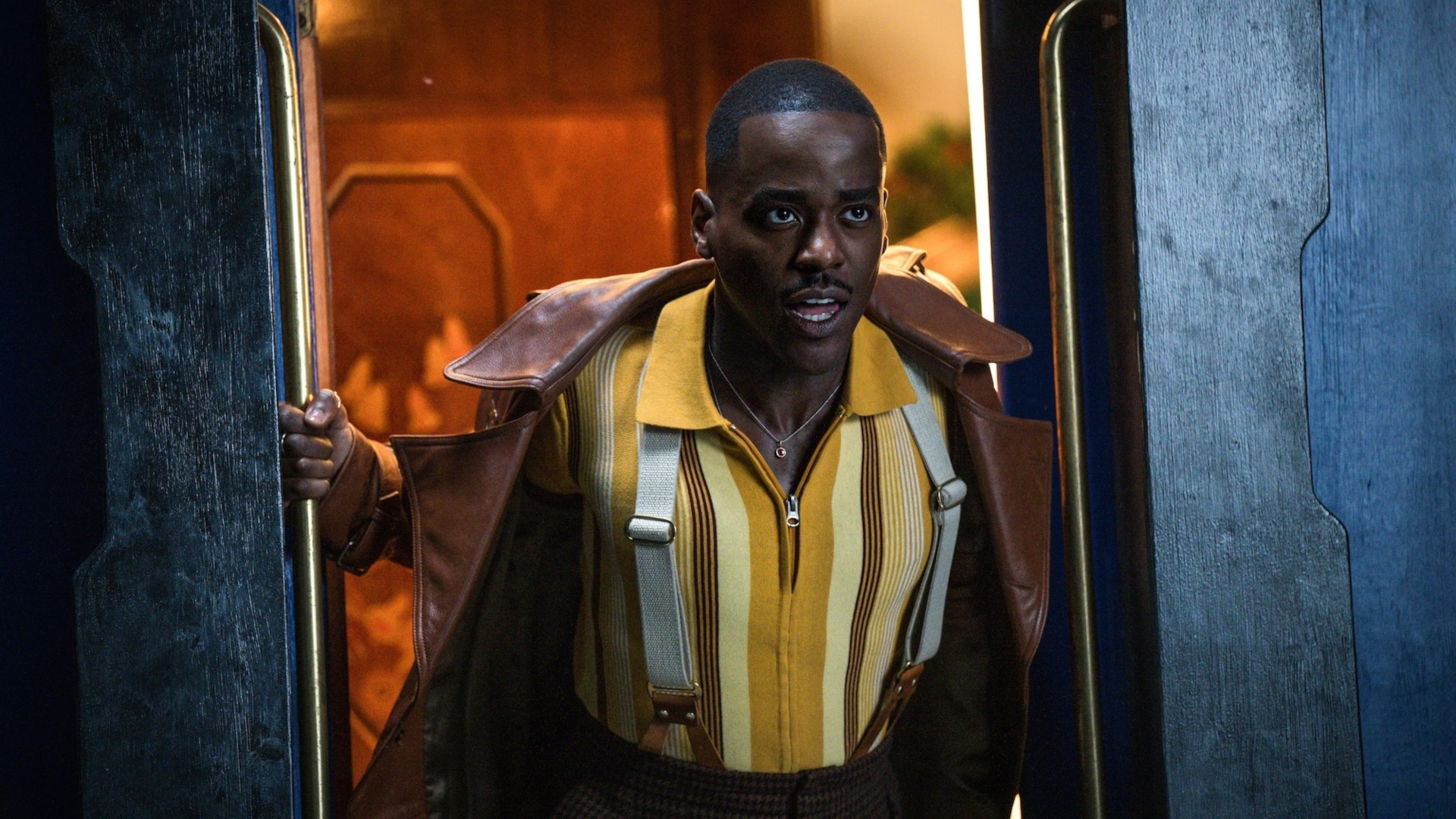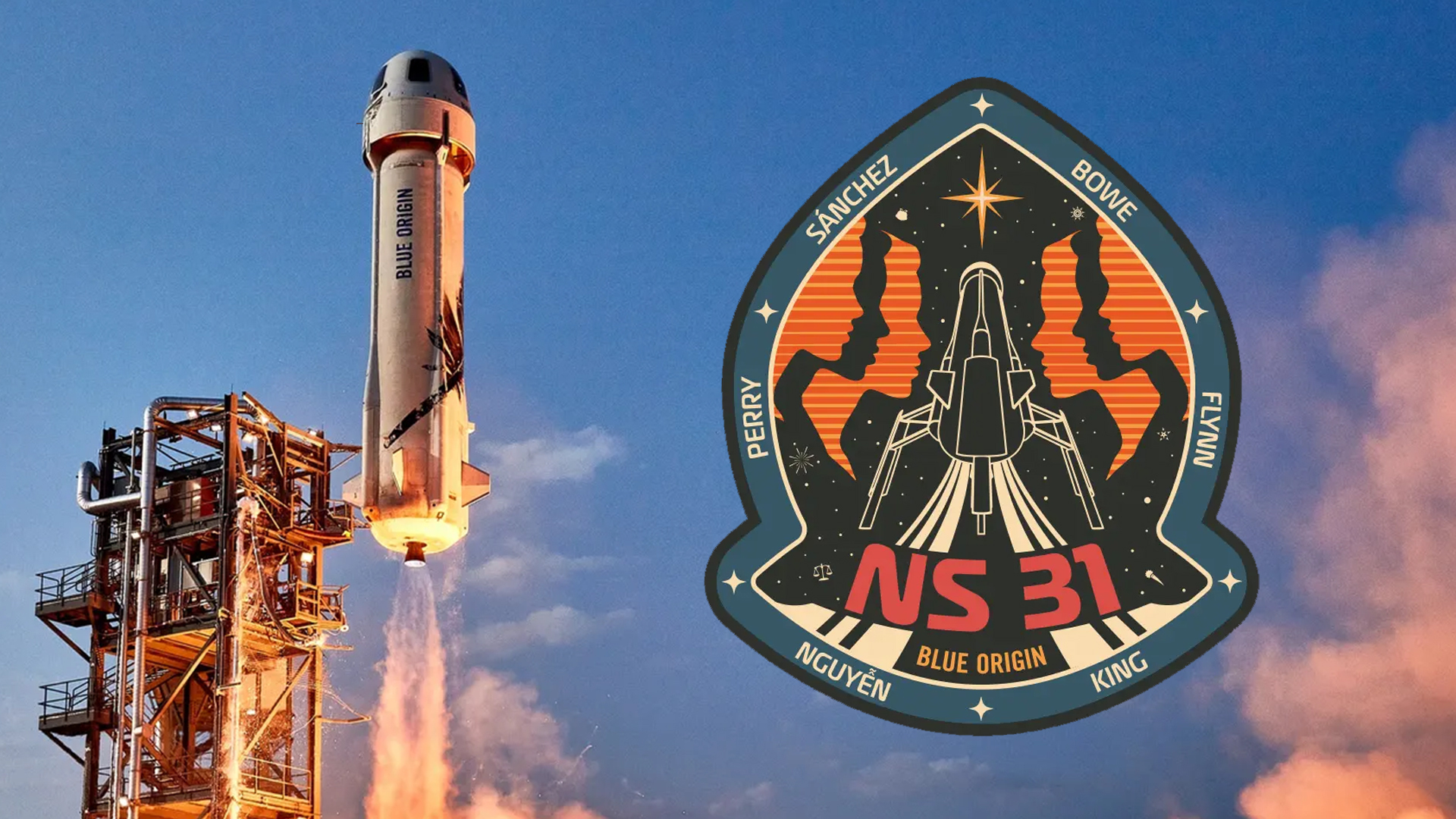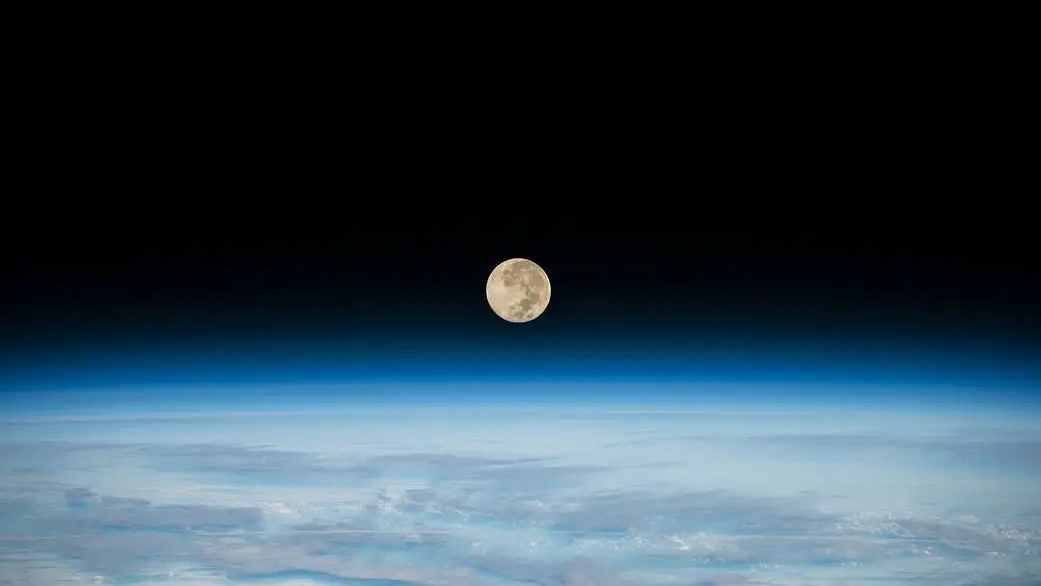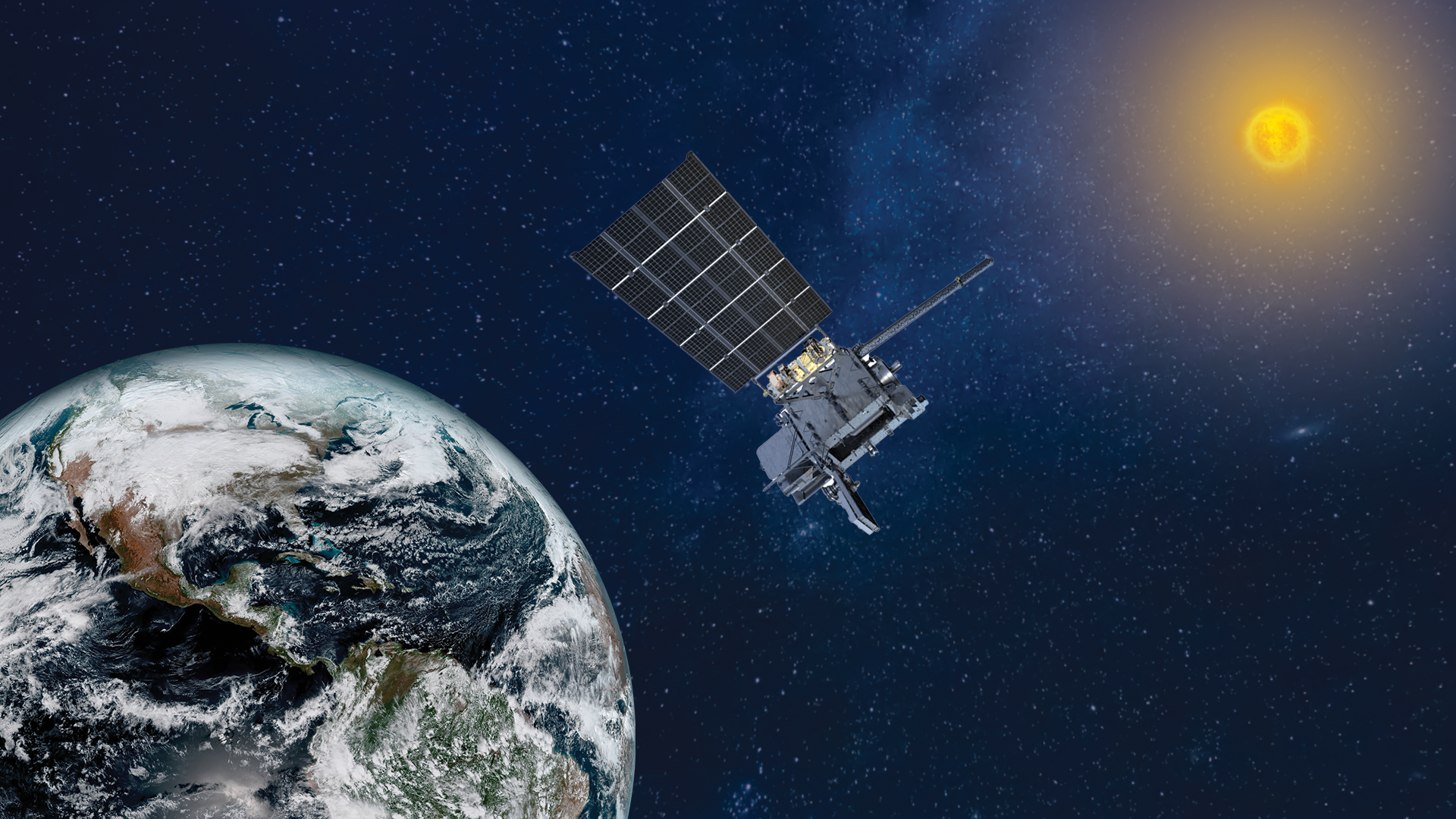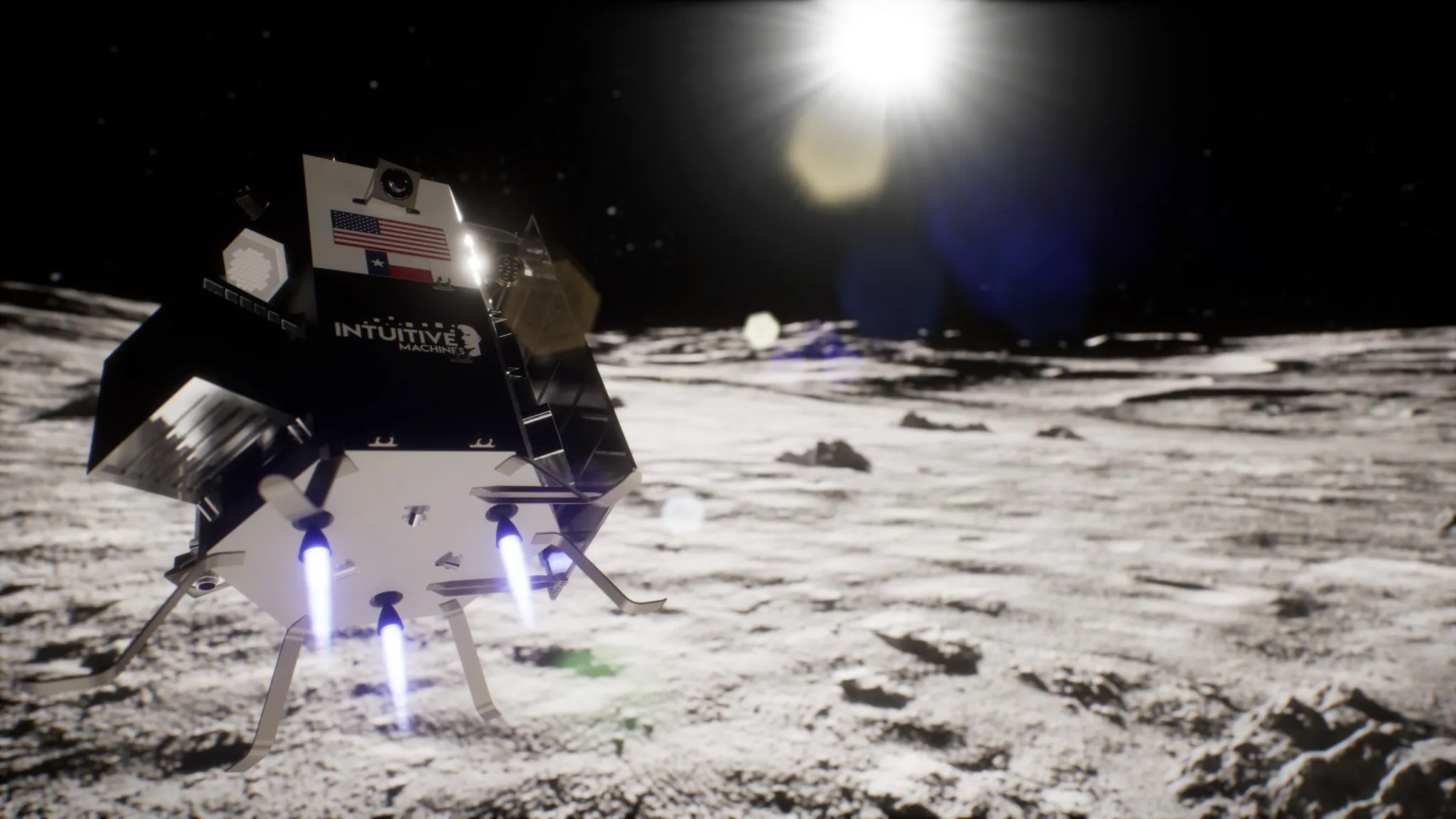
A SpaceX launch later this month will send a new type of lunar explorer to the moon.
IM-2, the second moon mission by Houston company Intuitive Machines, will lift off from Florida's Space Coast during a four-day window that opens on Feb. 26.
If all goes to plan, Athena will land on a plateau just 100 miles (160 kilometers) from the moon's south pole. This region is thought to be rich in water ice, and IM-2 will prospect for the precious resource with the help of some ride-along robots, including a pioneering hopper nicknamed Gracie.
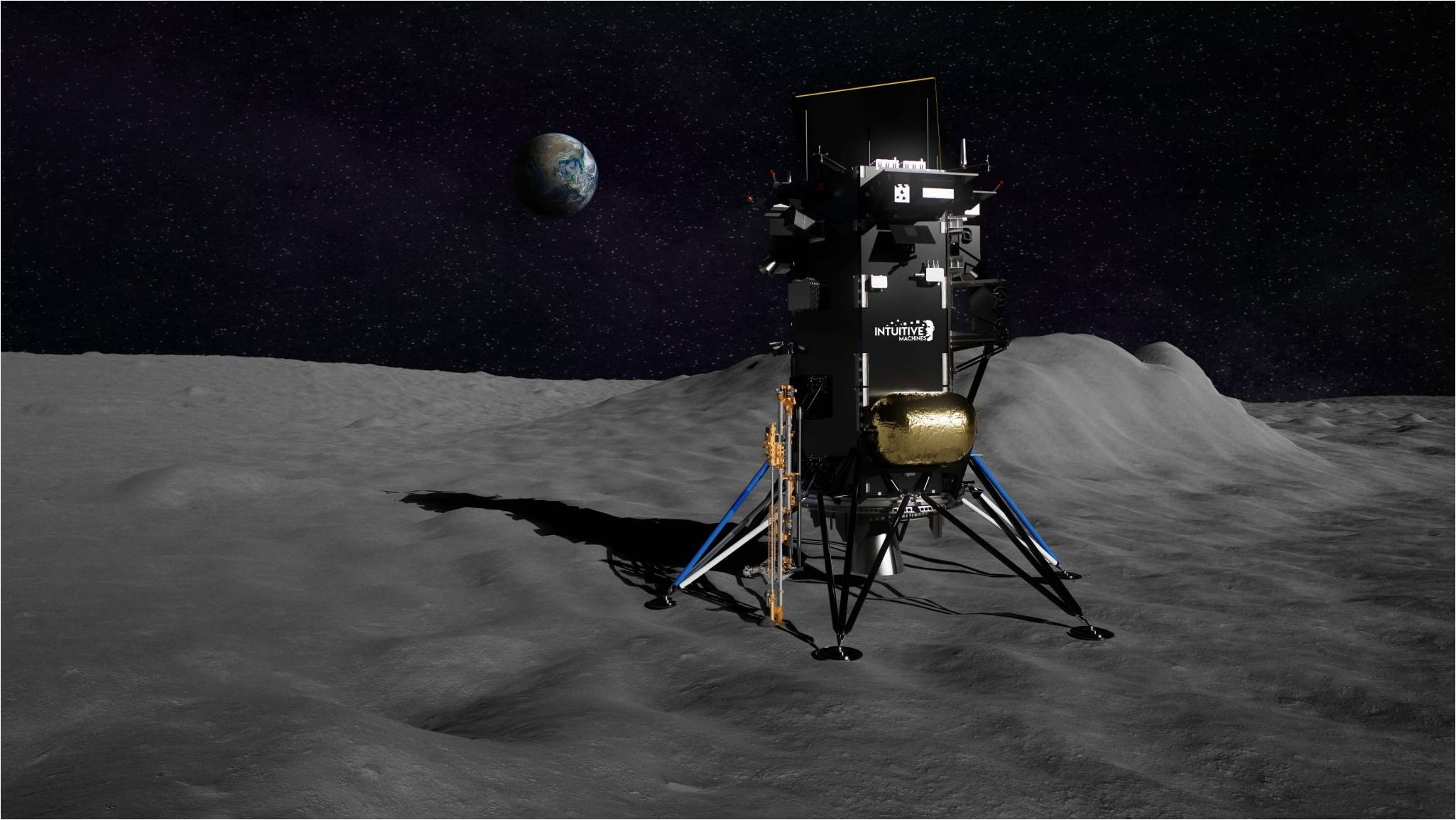
Gracie is a joint effort of Intuitive Machines and NASA, which contributed $41 million toward the development of the 77-pound (35-kilogram) robot. The little explorer is named after Grace Hopper, a pioneering computer scientist and mathematician who died in 1992.
Gracie will deploy from Athena and perform a total of five hops, using its thrusters to launch itself across the lunar surface. These leaps will get progressively higher; the first will reach a maximum of 65 feet (20 meters), for example, and the second will get up to 165 ft (50 m), said Trent Martin, senior vice president of space systems at Intuitive Machines.
"And on the third hop, we go about 100 meters [330 feet] in altitude," Martin said in a NASA press conference on Friday (Feb. 7). "We'll hop down into a permanently shadowed crater."
Get the Space.com Newsletter
Breaking space news, the latest updates on rocket launches, skywatching events and more!
That target crater, known as Crater H, lies about 1,650 ft (500 m) from Athena's landing site and is about 65 ft (20 m) deep, he added. Intuitive Machines hopes to maintain communications with the hopper while it's on the crater floor using another IM-2 payload, Nokia's Lunar Surface Communication System, which will set up the first-ever 4G/LTE network on the moon. Even if Gracie goes as dark as its surroundings, however, it should still be able to hop back out into the light: It's designed to do so after 45 minutes, or when surrounding temperatures reach a certain minimum, Martin said.
No hopper has ever explored the moon before (though China also intends to launch one next year, on its Chang'e 7 lunar mission). So, Gracie is mainly a technology demonstration, which aims "to show that we can reach extreme environments with technologies other than rovers," Martin said.
"The idea is that, if you have a really deep crater and you want to get down into that crater, why not do it with something like a drone?" he added. (One actual drone has flown on Mars to date — NASA's Ingenuity helicopter, which performed 72 flights on the Red Planet between April 2021 and January 2024.)
That being said, Gracie will gather potentially useful data, using an onboard "water snooper" instrument to scout for the resource in its surroundings. The hopper also sports some cameras, so we could get clear views of its lunar leaps.
More serious prospecting work will be performed by IM-2's primary payload, NASA's Polar Resources Ice Mining Experiment 1, or PRIME-1 for short. (The IM-2 mission is part of the agency's Commercial Lunar Payload Services program, or CLPS, which puts NASA science gear on private moon landers.)
PRIME-1 consists of two instruments: a drill that will grab samples from up to 3.3 feet (1 m) underground and a mass spectrometer, which will analyze those samples for the presence of water and other interesting compounds.
Also flying to the moon on Athena is MAPP ("Mobile Autonomous Prospecting Platform"), a 22-pound (10-kg) rover built by the Colorado company Lunar Outpost. MAPP will carry payloads of its own — for example, high-resolution optical and thermal cameras, which scientists will use to create detailed 3D imagery of the polar region that MAPP will explore.
MAPP will also collect lunar regolith as part of a contract with NASA. And it will tote on its top a much smaller rover — an "AstroAnt," a prototype swarm robot developed by the Massachusetts Institute of Technology whose four magnetic wheels will keep it from sliding off MAPP's top. AstroAnt will gather temperature data as its larger cousin trundles across the gray dirt.
The Athena lander will tote yet another tech-demonstrating robot to the moon as well — the 17.6-ounce (498-gram) Yaoki rover, which was built by Japanese company Dymon.
If all goes to plan, Athena will touch down on March 6 and operate on the lunar surface for about 10 Earth days. Its operational life will end shortly after the sun sets at its polar locale, depriving the solar-powered lander of life-giving light.
Intuitive Machines made history with its first moon mission, IM-1, which sent the Odysseus lander to Earth's nearest neighbor in February 2024: Odysseus pulled off the first-ever soft lunar landing by a privately built spacecraft. (That landing didn't go entirely to plan, however; Odysseus came in too hard, broke a landing leg and tipped partway onto its side.)
Two other private landers are currently on their way to the moon — Firefly Aerospace's Blue Ghost, which is also part of the CLPS program, and Resilience, built by Tokyo-based ispace. They launched together on a Falcon 9 on Jan. 15.
Join our Space Forums to keep talking space on the latest missions, night sky and more! And if you have a news tip, correction or comment, let us know at: community@space.com.

Michael Wall is a Senior Space Writer with Space.com and joined the team in 2010. He primarily covers exoplanets, spaceflight and military space, but has been known to dabble in the space art beat. His book about the search for alien life, "Out There," was published on Nov. 13, 2018. Before becoming a science writer, Michael worked as a herpetologist and wildlife biologist. He has a Ph.D. in evolutionary biology from the University of Sydney, Australia, a bachelor's degree from the University of Arizona, and a graduate certificate in science writing from the University of California, Santa Cruz. To find out what his latest project is, you can follow Michael on Twitter.
